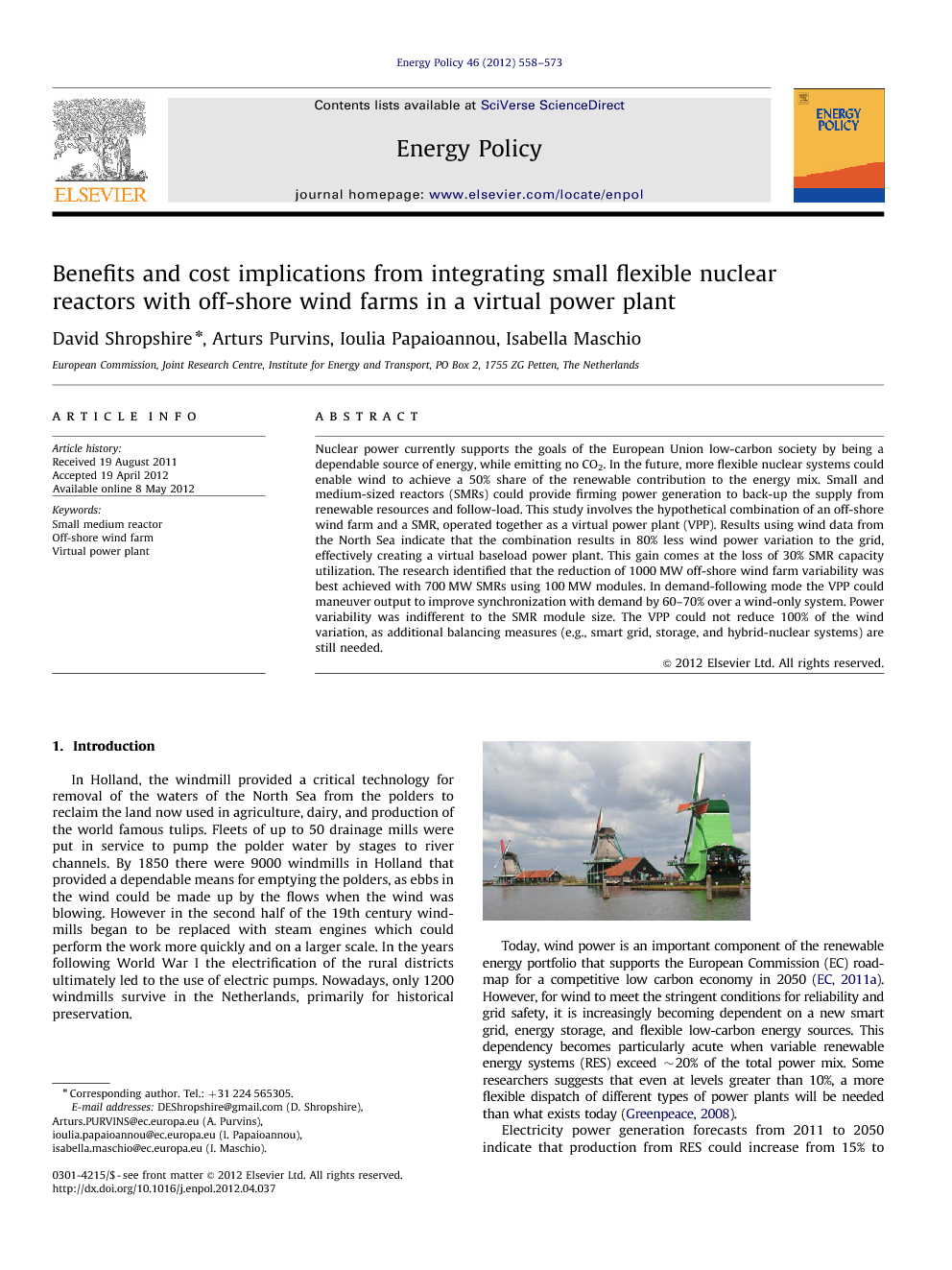ترجمه فارسی عنوان مقاله
پیامدهای سود و زیان از یکپارچه سازی رآکتورهای هسته ای کوچک انعطاف پذیر مزارع بادی برون سپاری خارجی در یک نیروگاه مجازی
عنوان انگلیسی
Benefits and cost implications from integrating small flexible nuclear reactors with off-shore wind farms in a virtual power plant
| کد مقاله | سال انتشار | تعداد صفحات مقاله انگلیسی |
|---|---|---|
| 6720 | 2012 | 16 صفحه PDF |
منبع

Publisher : Elsevier - Science Direct (الزویر - ساینس دایرکت)
Journal : Energy Policy, Volume 46, July 2012, Pages 558–573
ترجمه کلمات کلیدی
راکتور کوچک - مزرعه بادی برون سپاری خارجی - نیروگاه مجازی -
کلمات کلیدی انگلیسی
Small medium reactor,Off-shore wind farm,Virtual power plant,

